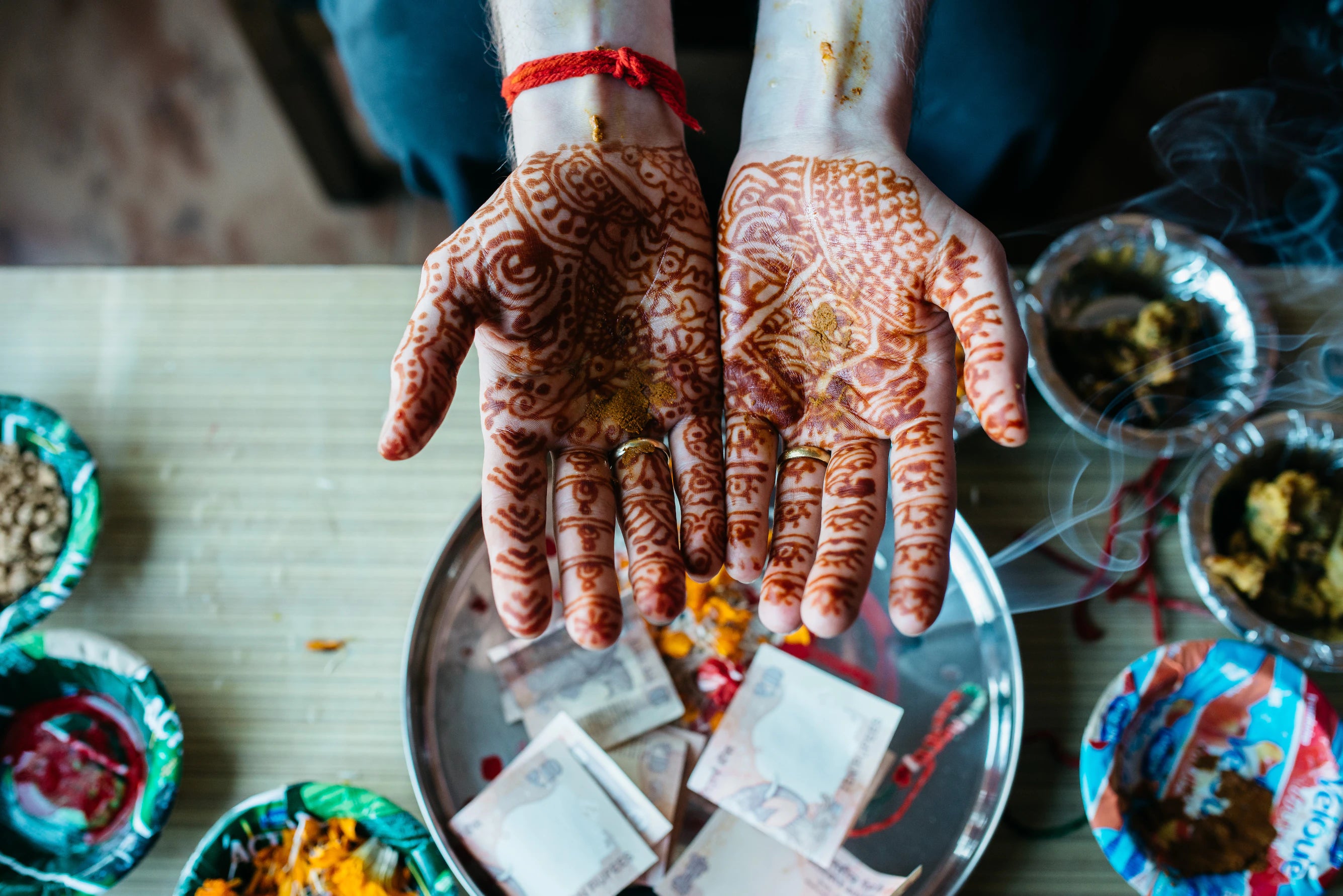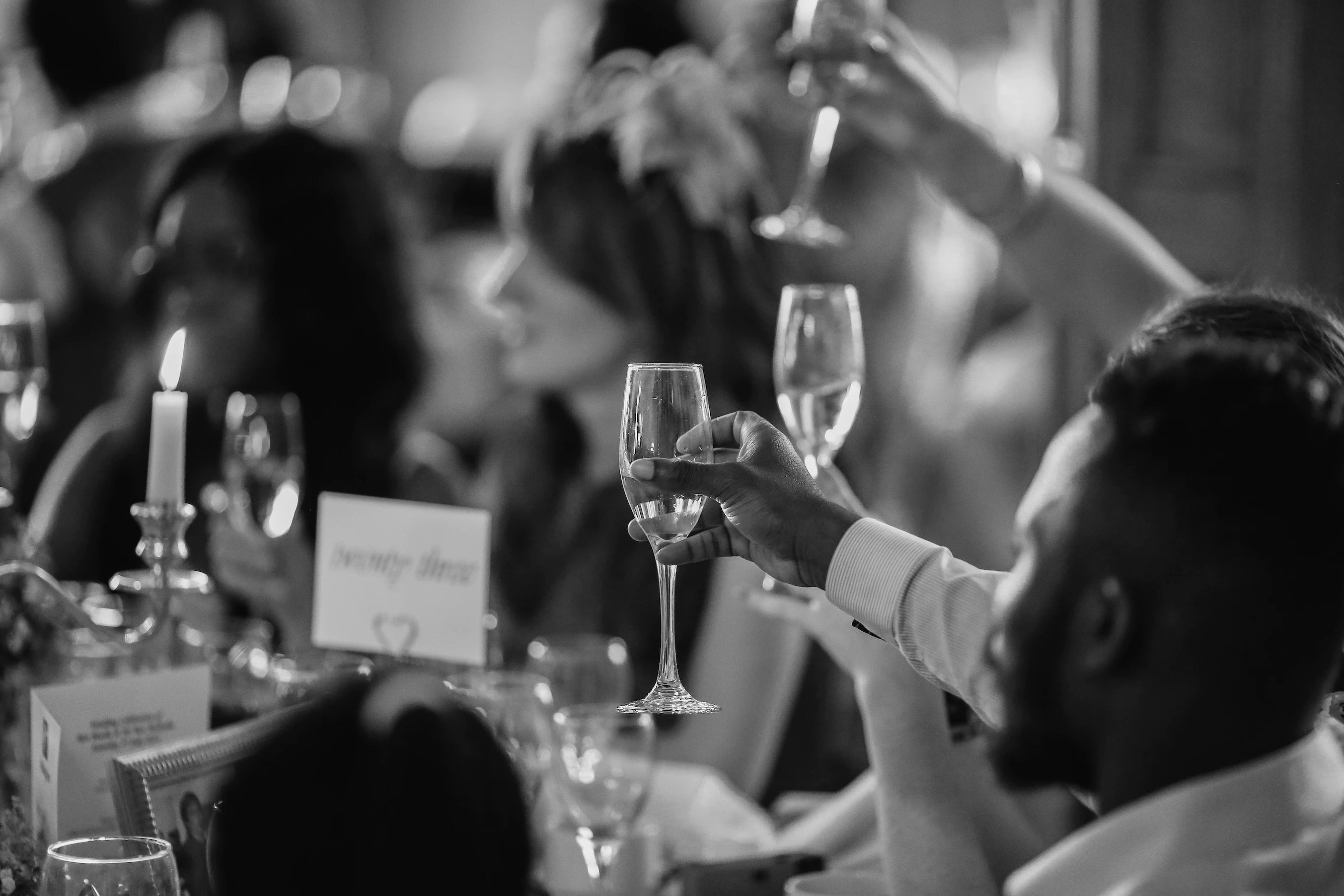
The History of Wedding Traditions: Part One
We love doing our part to make brides and the wedding industry a better, more thriving place. One of the ways we do this is by answering questions from brides on Instagram from time to time. We recently had a lot of questions about wedding traditions, so I wanted to put them all into words to help out brides in the future!
These are our frequently asked questions about wedding traditions.
Why do brides wear white?
Throughout history, many societies have associated white with concepts like purity and virtue, which was part of why brides would wear white dresses.
While white is considered the 'traditional' wedding colour, it hasn't always been that way. Some cultures had worn wedding dresses of different styles and colours long before white was considered traditional. However, starting in 1840, when Queen Victoria wed Prince Albert, the tradition of brides wearing white took off.
When royals were married, trends would be set, and word would spread about what queens or princesses wore to their weddings so that brides could follow suit to feel like a royal on their wedding day. Wearing white started as the go-to vibe for wealthy brides, but in the 20th century, it became the standard for most brides.
Why do brides carry bouquets at their weddings?
Flowers have been intertwined with wedding days for centuries, from ancient Romans carrying or wearing floral arrangements to their weddings as a symbol of new beginnings, fidelity to each other, and fertility to the middle ages, where brides wore floral arrangements to cover up odors (ew!), stimulate sexual desire, and ward off evil spirits.
Over the years, flowers started to be implemented in different ways. Still, the bouquet trend really took off at the same time white became the traditional wedding colour: when Queen Victoria and Prince Albert were married in 1840, holding a small clutch of flowers.
After Queen Victoria's marriage, the symbolism of flowers at weddings caught fire as a trend, and brides began to incorporate bouquets that represented meanings such as flowers representing love, fertility, happiness, ambition, and much more.
In the modern era, the bouquet has become more of an aesthetic choice that matches the gown or venue to create the perfect look. However, many brides still opt for personal flowers with a specific meaning or a generalised definition for things like love, family, etc.
Why do brides wear veils?
Bridal veils can be traced back to ancient Greece, where they existed as a symbol of purity and an accessory to ward off evil spirits. Wedding veils were also commonly used in arranged marriages, so the groom would see the bride when they were up on the altar.
In the modern era of weddings, it's common for veils to be an aesthetic choice or worn as a nod towards traditional wedding practices.
What is the meaning of 'Something old, something new, something borrowed, something blue.'?
If you've ever watched a TV show or movie with any wedding theme, you'll have heard this saying before, but where does it come from, and what does it mean
The 'Something old…' wedding saying is from an old English rhyme that conveys the four good-luck charms or objects every bride should have on her wedding day.
Something old: This represents the past lives of the couple
Something new: This represents the happy, loving future the couple will have together after their wedding.
Something borrowed: This was a nod to incorporating an item that initially belonged to someone else who was happily married as a way to borrow some of their good luck.
Something blue: Blue represents love and fidelity, so it was incorporated into the wedding as 'something blue.'
Can my husband see my dress before the wedding?
Traditionally, brides stayed hidden from their husbands until the wedding because of arranged marriages. The bride's parents would be afraid that the groom might see her and stop the wedding, breaking the arrangement and ending the bride's prospects' of marrying someone that would raise her in society's eyes at the time.
In the modern world, it's a tradition that continues but with a different meaning; it's for brides to have a 'first look' when their husband sees them glammed up in their wedding gown. Many couples cancel this tradition and will get ready together before their marriage to make their wedding mornings more memorable. In contrast, others carry out a first look before the wedding itself.
Can my fiancé help me choose my wedding dress?
As mentioned above, some brides will keep their gowns and look a secret from their partners as a 'first look' moment at the wedding. Still, other brides will ignore this tradition completely and choose their own path of shopping with their partners or showing them ideas as they're on the journey to purchase their gown.
Why does my father walk me down the aisle?
The tradition of a bride being walked down the aisle by her father and 'given away' stems from arranged marriages and brides quite literally being 'given away' to their husband; it signifies the father handing over ownership of his daughter to her new husband.
When it comes to modern weddings, this tradition is either scrapped entirely or carried out without any historical context; it's just a bride walking down the aisle with her dad at her side.
This tradition can be tricky. Some brides may not have a father in their lives or may have a father who has passed away. At the same time, others may find the original tradition too sexist to want to incorporate into their wedding, so being walked down the aisle has been contentious at modern wedding ceremonies.
Why is the groom always on the right?
The original concept behind the tradition of the bride being on the left, and the groom on the right, which will seem quite strange in today's world, was so that the groom had his right hand free (left hand holding the bride's hand) in case he needed to draw his sword and defend his bride mid-ceremony.
Hopefully, your wedding will not require sword defence, but the tradition itself is just a matter of what side the bride or groom prefers to stand on in today's era of weddings.
Why is it called 'the ring finger'?
The concept of the 'ring finger' traces back to ancient Rome, where it was believed that the third finger (or fourth if we count thumb) on your left hand is connected directly to your heart via a vein called the 'vein of love.' This connection between the finger and heart made it perfect for wedding rings.



Leave a comment
This site is protected by hCaptcha and the hCaptcha Privacy Policy and Terms of Service apply.